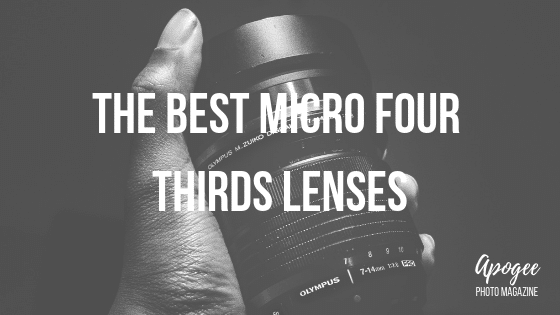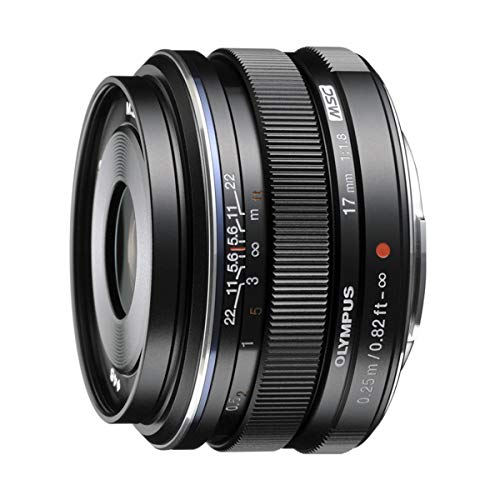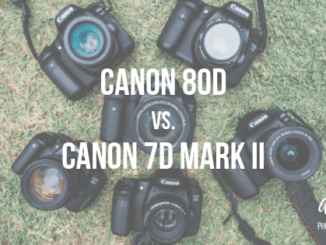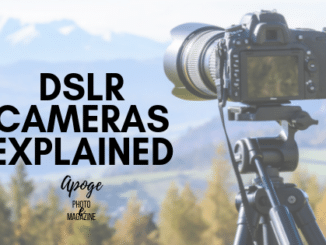 The best Micro Four Thirds lenses combine precision optics, rugged build, and ease of use, to provide a light-gathering tool that is every bit as good as the state-of-the-art camera its attached to. To be sure, the recipe for good photography is roughly just one part equipment to two parts photographer. And expensive gear won’t automatically guarantee good photos. But just as equally, even the most talented of photographers would struggle to produce anything of real worth if shackled with substandard tools.
The best Micro Four Thirds lenses combine precision optics, rugged build, and ease of use, to provide a light-gathering tool that is every bit as good as the state-of-the-art camera its attached to. To be sure, the recipe for good photography is roughly just one part equipment to two parts photographer. And expensive gear won’t automatically guarantee good photos. But just as equally, even the most talented of photographers would struggle to produce anything of real worth if shackled with substandard tools.
Beyond the image sensor in your camera, it’s the glass on the front that will have the greatest influence upon the quality of your files. Modern optics are generally excellent, so in all likelihood, the kit lens that came with your camera will do a good enough job in most cases.
But when it comes to photography, many of us strive for more than just “good enough.”
With the unstoppable rise of the Micro Four Thirds format, there’s now an enormous range of lenses available for users in most focal lengths. These can vary in quality from the decidedly mediocre to the truly excellent. But if you’re considering investing some serious money in new glass, you’ll want to be sure that any lenses you add to your collection genuinely offer a significant step up in performance over those you already own.
But what are the most important points to consider when choosing a new lens? And which are some of the best Micro Four Thirds lenses available right now? Our guide answers all.
Important Factors to Consider When Selecting the Best Micro Four Thirds Lenses
Sharpness
If you are serious about your photography, image sharpness will be paramount. Even the very best lenses tend not to be uniformly sharp across the entire image area, nor throughout all aperture settings. But while some degree of fall-off in sharpness and detail towards the corners or edges of the frame is to expected, the less evident this softening of the image is, the better it will be for your photography.
Even if there is some loss of clarity at the extremes, the center of the frame must be tack-sharp at as many aperture positions as possible. Most lenses will deliver a sharp center of the image at moderate diaphragm settings – say between f/4 and f/11 – but only the best can maintain this level of precision and detail at much wider apertures such as f/1.8.
While the sharpness and detail provided by a lens are undoubtedly of primary concern, there are also several other important factors you should consider when choosing the best Micro Four Thirds lenses for your needs.
Optical Defects
Cheaper lenses can often suffer from various optical problems that will be detrimental to your photography. Thankfully it is easy to fix issues such as barrel distortion, ghosting, color fringing, and other aberrations post-production.
However, this can be time-consuming, and depending upon the seriousness of the issue, fixing the problem may also degrade the quality of the image. What’s more, lens flare is more difficult to remove and can be a real problem when shooting against the light using an inferior lens.
While it’s likely that no lens will be 100% free from potential problems of this kind, the best lenses get pretty close. Be sure to research a lens for any potential problems in this area before making your final choice.
Bokeh
The word bokeh refers to how a lens renders out of focus areas of a photograph. Although matters of aesthetics are always somewhat subjective, most people agree that smooth, swirly, rendering of the background is more attractive than when out of focus areas are bitty and busy, or when defocused objects exhibit double edges.
A typical scenario where bokeh tends to be very noticeable is when shooting a portrait of someone against a background of trees using a shallow depth of field. Depending upon the lens used, the interplay of light, leaves, and branches can either be rendered in a way that is visually very pleasing, or more harsh and distracting.
Another classic case would be when photographing an urban area at night, with street lights, car headlamps, and neon in the background rendered as pretty colored circles. With a really “good” lens, these points of light will be perfectly round. However, another lens may render the same lights as polygons – the number of sides depending on the number of diaphragm blades in the lens, with a greater number of blades making for a smoother, more rounded shape.
The differences between one lens and another in this area are often quite subtle. And yet a lens that produces attractive bokeh can contribute to a much more appealing final image.
Naturally, if you shoot everything with the lens shut down to f/16 all the time, this is not something you will be overly concerned about, as almost all your photos will be entirely in focus from background to foreground. But those who will spend a lot of time shooting at wider apertures will definitely want to check out the bokeh qualities of a lens before deciding whether to purchase it or not.
Focus
Autofocus must be fast, silent, and accurate. There should be no “searching” – where the lens becomes confused and starts stuttering backward and forward looking for a point to focus on. Most modern lenses tend to perform pretty well when in single shot mode, but AF problems are more evident during continuous shooting or video situations.
This means that, in assessing the autofocus of a particular lens, you shouldn’t merely shoot off a few single shots of a static subject and decide that the AF performs well. To be sure that a specific lens is up to the task, you’ll need to put it to the test under more demanding conditions: ideally by shooting many images of a fast-moving subject in continuous AF mode.
Many of the best Micro Four Thirds lenses now come with a snap-select ring for quickly switching between auto and manual focus – without the need to remove the camera from your eye. Just pull the ring back, and it will now function as a control for manual focus.
In reality, most such lenses offer only a simulation of manual mode (i.e., the focus is still functioning electronically). However, the very best are nonetheless extremely smooth and tactile to use. Many even provide focus stops at the extremes, making for much more satisfying manual operation.
Not all manufacturers currently offer these features though – with some still just providing an AF/MF selection switch on the side of the lens barrel. So be sure to do your research here too.
Aperture
If shooting in low-lighting conditions is a priority for you, you’ll favor wide-aperture lenses capable of capturing the greatest amount of light in the shortest time possible. Indeed, beyond optical image quality, the faster maximum aperture is probably the most common reason why a photographer might decide to trade in their entry-level lens collection for something more costly.
Of course, aperture doesn’t only determine the amount of light hitting the sensor, but also dictates depth-of-field. This means that a fast-aperture lens will be useful for many photographers beyond just insomniacs. If you ever shoot portraits, “food porn,” or other still-life photos, you’ll likely also appreciate the shallower depth-of-field afforded by a fast lens.
At the other end of the spectrum though, there’s also minimum aperture to consider. Most modern lenses go to f/22. However, some offer no more than f/16. Clearly, if you are in the habit of shooting landscapes, then you’ll want to purchase a lens that offers the smallest aperture possible to gain maximum depth-of-field.
Build Quality
It should go without saying, but if you shoot fairly regularly, a solid, metal-bodied lens with weather sealing will always prove to be a better investment over time than a poorly made, plastic-bodied, el-cheapo.
Even some modern plastic lenses can be very durable though. The only way to get a true idea of how sturdy and hardwearing a lens might be is to get it in your hands and feel just how heavy and solid the thing is.
If it feels cheap and poorly made, well, it’s probably exactly that. Such a lens might be fine for those who only shoot in the studio, and fairly infrequently at that, but for anyone who subjects their equipment to a more punishing working life, it will probably be worth paying more for a lens that inspires greater confidence in this department.
Convenience and Ease of Use
You should take all of the above points into serious consideration. But no matter how impressive the images produced by a particular lens may be, don’t overlook the fact that you will need to feel comfortable using this lens day in, and day out. It doesn’t matter how sharp or fast a certain piece of gear is if in the end, it spends most of its life sitting unloved on the sideboard because it’s too big, heavy, or inconvenient to carry around when out shooting.
While lenses are often highly complex feats of engineering on the inside, as far as user controls go, they tend to be rather simple on the outside. Having said this, some lenses are more straightforward than others, and the usability of a lens can massively improve by the addition of just one or two extra controls. Or even simply by tweaking the design of the most basic controls – such as the focus or zoom ring – for more pleasurable and tactile operation.
For example, although the addition of LCD menus to modern cameras means that a physical aperture ring is no longer necessary for changing aperture, it can nonetheless be a very useful thing to have all the same. As can the ability to quickly choose between auto or manual focus modes by means of a “pump action” focus ring.
Also, manufacturers are increasingly including custom buttons on the side of lens barrels. These allow the user to assign whichever preset function they choose, for faster control. Be sure to check out these features when comparing otherwise similarly specced lenses.
Six of the Best Micro Four Thirds Lenses Available Today
Olympus M.Zuiko Digital ED 12-40mm f/2.8 Pro
The Olympus 12-40mm f/2.8 PRO offers the equivalent of a 24-80mm focal length in the full-frame 35mm format, making it an excellent general purpose lens for everyday photography requirements. Indeed, for many shooters, 12-40mm may be all they ever need: zooming from a wide angle, through a standard point of view, up to portrait length. And with a relatively fast continuous aperture throughout, you’re basically covered for most regular shooting situations – even if in quite low light.
Although the 12-40mm f/2.8 is not exactly tiny, its a nice little handful of a lens, and discrete enough not to attract too much attention when out shooting. On top of which, it’s very solidly built, comes with a degree of weather sealing, and is even freeze-proof.
For further protection, the bundled lens-hood features a very secure locking mechanism, more or less guaranteeing it won’t fall off. What’s more, you can throw the whole lens in your bag without needing to remove the hood, as the clever design of the lens cap permits you to use the two together.
Shooting with the lens is highly intuitive and enjoyable. Particularly worthy of mention is the snap focus ring, for switching between AF and manual focus modes. When pushed forward, autofocus functions as normal, but pull the ring back and you immediately have full manual control.
There’s also a custom function button, allowing you to assign a preset of your choice for quick access. These features combine to make for a very tactile and convincing shooting experience.
Image quality is superb, and the lens creates beautiful circular bokeh, making it also a great choice for video work. The Olympus’s nearest comparable competitor is probably the Panasonic 12-25mm f/2.8. While optically the two lenses are similarly excellent, autofocus is superior on the Olympus, and it also allows you to get in closer to the subject than with the Panasonic, making it better for macro shots.
The only area where the Olympus lags is that it has no built-in image stabilization, whereas the Panasonic features very good O.I.S. If this a concern for you, you’ll need to use the Olympus with a camera body offering some degree of onboard stabilization.
F/2.8 is fast, but admittedly not that fast. And if you were to go for prime lenses rather than a zoom, then you could likely gain yourself an extra stop or two of light. However, you’d also need to carry at least three lenses around with you rather than the single Olympus. And for most shooting situations f/2.8 will be plenty fast.
Ultimately then, the selling point of the Olympus 12-40mm f/2.8 PRO is a winning combination of convenience, speed, and image quality. An all-purpose, all-weather, and all-terrain lens that is particularly suited to events, travel and street photography. And as it also offers among the very best quality results of any zoom lens in the M43 format right now, if your budget can only stretch to a single piece of glass, it should probably be this one.
- Constant f2.8 maximum aperture
- Focal length : 12 to 40 millimeter, Minimum focus distance 7.87 inches (20 centimeter )
- Drip Proof; Dustproof, splash proof, and freeze proof construction. Lens construction:14 elements in 9 Groups (Aspherical ED lens, 2 Aspherical lenses, DSA lens, 2 ED lenses, HD lens, 2 HR lense)
- Includes lens hood and pouch,Filter Size 62 millimeter, equipped with manual focus clutch mechanism
- Compatible with Olympus and Panasonic cameras
Panasonic Leica 42.5mm f/1.2 Nocticron
The Panasonic Leica 42.5mm f/1.2 Nocticron is a super-fast prime lens, offering a 35mm equivalent of the classic 85mm portrait lens. While the Olympus 12-40mm (above) will almost get you to this focal length, the simple fact is that not everyone likes using zoom lenses. And for photographers who value the ability to draw in as much light as possible, or to gain a supremely narrow depth-of-field, the 42.5mm f/1.2 offers unrivaled speed for indoor and low-light shooting.
This is a lens that was made for producing flattering head and shoulders portraits. It will likely be of most interest to jobbing professionals and serious enthusiasts who value its exceptional optical qualities over convenience. Conversely, it’s probably not the kind of lens you’d carry around all day as your go-to piece of glass.
Firstly, this is just because the relatively long focal length isn’t that useful for general shooting situations. For example, try producing an interiors shot with this lens. Or, more difficult still, how about a selfie?
If the Nocticron isn’t a “walkabout” lens, it’s also because, with its solid metal body, and hefty chunks of glass, it’s actually a very bulky and heavy piece of kit. Indeed, the 42.5mm looks absolutely enormous on smaller M43 camera bodies such as a GM1 and will handle much better on larger cameras where there is a greater degree of balance between lens and body.
The lens barrel features a number of physical controls, meaning you don’t have to go digging into menus in order to access many of the most commonly used functions. For example, there’s a physical aperture ring which means that you can change the diaphragm without removing the camera from your eye to touch the rear dial. Plus there’s also an O.I.S. on/off switch and an AF/MF selection switch.
Single-shot autofocus is basically instantaneous. And the eye-tracking focus is also very, very impressive – even in low light. Meanwhile, with its exceptionally smooth action, the manual focus ring is a pleasure to use too.
As might be expected from a lens bearing the Leica brand name, image quality is exemplary. There’s certainly none of the optical compromise often associated with fast lenses of this kind. It’s sharp across the frame, even when used wide open; there’s no flare, and only the most minimal of purple fringing is detectable.
The closest alternative to the Panasonic Leica 42.5mm f/1.2 Nocticron is probably Olympus’s 45mm lens. However there’s little comparison between the two optically or in terms of out-of-focus rendering: with the Nocticron bokeh is buttery smooth; while the Olympus exhibits busy, gritty-looking, backgrounds. Mind you though, the Olympus costs way, way less than the Leica-designed Nocticron.
Supremely sharp, super fast, and offering a great focal length: the only real downside to this lens is the price tag.
- Optically Stabilized with LUMIX Power O.I.S.
- LUMIX Advanced Nano Surface Coating
- External Aperture Ring and Metal Lens Hood
- Micro Four Thirds Lens Mount
- Lens not Zoomable
Olympus M.Zuiko Digital 17mm f/1.8
Another option for those who prefer their glass fixed and fast, the Olympus 17mm f/1.8 is a moderately wide prime lens offering the equivalent of a 34mm focal length in the full-frame format. A 17mm is a very versatile tool to have around, being just wide enough that in most cases you’ll be able to get everything you need in the shot. The lens is not too wide that the subject will be too small in the frame or that the lens will cause ugly distortion of horizontal and vertical lines.
The fast maximum aperture makes this a great piece of glass for shooting under poor lighting conditions. Meanwhile, the small size and solid metal build mean that this is an extremely practical and hardwearing little tool for daily use.
It is the kind of lens that will appeal to wedding, events, extreme-sports, documentary, and street photographers. Portrait shooters, too, might enjoy the 17mm for switching up their regular point of view, or shooting images that better show the subject in relation to their environment.
The 17mm’s autofocus is easily as good as any other lens in the Micro Four Thirds format. It’s very accurate and basically instantaneous. Alternatively, use the snap ring to switch between auto and manual focus modes, and you’ll find that the manual focus action is also very satisfying.
While the lens is exceedingly sharp, clean, and contrasty, the slightest of purple fringing can sometimes be apparent. The lens’s closest focus distance is approximately 9 inches: not close enough for true macro work, but close enough to throw the background entirely out of focus.
Although there is, unfortunately, no weather sealing on the Olympus 17mm f/1.8, it is a considerably sturdier and better-made lens than its closest competitor, the Panasonic Lumix G 20mm f/1.7. However, the two lenses are optically very similar, while the Panasonic retails at a somewhat lower price, so those on a budget might consider this latter option as an alternative.
- Ultra compact wide angle lens
- Macro Focus Range : 0.25 meter, Focal Length : 17 millimeter
- 34 millimeter equivalent field of view captures large groups or landscapes
- Premium metallic construction, Snap focus manual focus ring
- Fast f/1.8 aperture, great for low light shooting, Special all metal lens hood and cap optionally available
Panasonic Leica 200mm f/2.8 Telephoto
As with the 42.5mm Nocticron (above), the Panasonic Leica 200mm f/2.8 Telephoto is an extremely high quality and solidly-built lens for serious enthusiasts and professional photographers alike. Again though, it comes with a hefty price tag to match.
At 200mm, equivalent to a 400mm in full-frame format, this is not a lens that will be of interest to everyone. Indeed, it’s a specialized lens for quite a specific use: significant magnification of distant subjects, even in low light.
Nonetheless, if you shoot sports, wildlife, or street photography, this is probably a task you have frequent reason to perform. If that’s the case, then this might be the lens for you, as it’s likely that no other lens for the Micro Four Thirds format will do it quite as well as the Panasonic Leica does.
The lens is reassuringly solid in build and features a tripod mount on the lens barrel itself for those times when you need extra support. Stability is further improved by the lens’s excellent onboard O.I.S, which gives good results even on cameras with no in-body stabilization.
Operating the lens is very smooth, offering super speedy single-shot AF, and even quite excellent continuous autofocus that rivals any other lens in the M43 category. Meanwhile, a switch on the barrel of the lens itself permits quick toggling of focus modes between AF and MF, the latter being controlled by a sensitive focus ring.
Other controls on the lens include a focus limiting switch. This restricts focus to a narrower range to avoid any jerky “focus searching” between background and foreground. There’s also a focus memory recall switch: press it, and the lens will automatically return focus to whichever preselected distance you’ve saved (great for accurate execution of clever focus-pull tricks when shooting video).
And we’re also treated to Panasonic’s first programmable function button. Finally, there’s an O.I.S. on/off switch and an old-style physical aperture ring for those who like to change aperture without taking their eye off the subject.
Images shot with the 200mm f/2.8 are crystal-clear and contrasty – right across the frame, and at all apertures. What’s more, there’s absolutely no noticeable distortion or color fringing.
This is an all-round excellent lens. The only reason you might think twice about buying the 200mm f/2.8 is simply economic: as is the case with quite a few of these Panasonic-Leica lenses, the price is, quite frankly, stratospheric!
However, assuming you’re confident that you’ll be sticking with the Micro Four Thirds format for some time, perhaps the price tag is quite justified: it’s certainly unlikely that you’d ever need to buy another lens within this focal length again.
What’s more, you’re effectively getting not one, but two lenses. This is because the Panasonic Leica 200mm f/2.8 Telephoto comes with a 1.4 x teleconverter. Although the use of the converter causes a very slight drop in contrast and sharpness, it is not enough to justify investing in a dedicated longer lens in addition to the 200mm.
However, those less concerned with low-light capabilities, and looking for an otherwise more versatile lens, might instead consider the much cheaper Panasonic Leica DG Vario-Elmarit 50-200mm f/2.8-4.0 ASPH.
- Professional, high-quality LEICA DG ELMARIT optics. (15 Elements in 13 Groups, [2 UED Elements]).
- 200mm large diameter ultra-telephoto lens F2.8 (77mm lens filter threads) suitable for wildlife photography. Magnification extends to 280mm *1 with included 1.4X Teleconverter DMW-TS14.
- Power optical image stabilizer (O.I.S.) effectively compensates for the hand-shake movement in combination with LUMIX cameras supporting Dual I.S. and Dual I.S. 2.0 in-camera stabilization.
- Triple Linear motor system and max. 240 fps sensor drive for high-speed autofocusing.
- Rugged, dust/splash-proof design and are even freeze-proof down to 14 Fahrenheit to withstand professional use under harsh conditions.
Olympus M.Zuiko Digital ED 7-14mm f/2.8 PRO
Providing excellent detail and sharpness, and producing truly beautiful out of focus rendering of the background, the Olympus 7-14mm f/2.8 PRO is perhaps the best ultra-wide lens currently available in the Micro Four Thirds format. The constant aperture of f/2.8 makes it a great all-around option for low-light shooting, and the fact that it is small and lightweight, yet very solid, means you’ll never have an excuse for not throwing it in your bag.
While the 7-14mm does suffer from a certain degree of flare when shooting into the light, this is fairly typical of wider lenses such as this. In any case, some photographers consider this more of a feature than a defect. Importantly though, images produced with the 7-14mm exhibit precisely zero ghosting and very little in the way of color aberrations (in any case, a little fringing is easily fixed in post). Indeed, color rendition is overall excellent.
The barrel features a generously wide zoom control ring that is very satisfying to use and provides excellent grip. There’s also an AF/MF snap-selection ring. AF is fast, accurate and quiet, making it a good option for video too.
The fact that the lens is also sealed against dust and splashes, and fully freeze-proof, means that this can be a great option for extreme sports such as cycling, motocross, skate, and snowboard photography.
Overall, the Olympus 7-14mm f/2.8 PRO is a great quality wide-angle zoom with a fast aperture that will appeal to those who regularly shoot landscapes, street, documentary, interiors, and – as already mentioned – extreme action sports.
- Ideal wide zoom lens provides expressiveness
- For those who seek mobility and professional-level image quality
- Gives an enhanced photographic perspective
- Allows you to travel light and shoot without a tripod
- Focus details: High-speed Imager AF (MSC)
Olympus M.Zuiko Digital ED 25mm f/1.2 PRO
Fast, sharp, and robust, the Olympus M.Zuiko 25mm f/1.2 PRO is the king of standard lenses. We might specifically recommend this lens for those shooting weddings, events, portraits, and documentary photography, but the simple fact is that every photographer should have a 50mm-equivalent lens in their camera bag. And for those using the Micro Four Thirds system, this is without a doubt one of the very best standard lenses there is.
Of solid metal construction, and weather-sealed for extra durability, this is a lens that will not let you down. It also happens to have the fastest aperture of any Olympus lens, making it an unparalleled precision tool for working in low-light.
Autofocus performs outstandingly well in single shot mode and is also great for shooting stills in continuous AF mode. However, be aware that autofocus can sometimes lag when shooting video. A quick-snap manual focus ring makes manual focusing a pleasure at all times.
The lens comes with its own sturdy plastic lens-hood and features a button on the barrel for easy assignment of customs functions.
Optically the lens is outstanding, exhibiting amazing central sharpness even when used wide open. However, best performance is between f/4 and f/11 and as is to be expected there is some very slight fall off of detail at the edges even at these settings.
The lens produces great bokeh, helping to create a very nice separation between subject and background. Although be aware that shapes formed by the lens’s nine-blade diaphragm start to become noticeable in bokeh light-circles as you stop down beyond about f/2.8. Finally, while there is some occasional flare, chromatic aberrations are thankfully minimal.
The Olympus M.Zuiko 25mm f/1.2 PRO is certainly not a short lens and is even quite heavy for one of this focal length. However, it is without a doubt one of the best prime lenses out there right now. Of course, due to its size, it’s perhaps not the first option for those with smaller cameras. But for photographers using a larger body, it will make for an extremely satisfying shooting experience.
- Ultra-Bright f1.2 aperture
- 19 elements in 14 groups for outstanding resolution
- Superior optical design eliminates aberrations and fringing. Closest Focusing Distance : 0.3m
- Z Coating Nano (advanced Zuiko extra low reflection optical coating)
- Manual focus clutch
Final Thoughts
While the single greatest determinant of image quality is your camera’s image sensor, clearly the sensor can only process the information provided to it by the lens. And if that lens is optically lacking, there’s very little that the sensor can do to rectify this. What’s more, a camera lens is not merely a passive gatherer of light, but also a creative tool that can be used to alter final photographic outcomes radically.
The old adage that it’s the photographer, not the equipment, who makes the picture is of course true. And we certainly discourage against unnecessarily purchasing extra photographic gear in the hope that it will miraculously transform your photography.
However, the lenses you use are among the most potent tools you have in achieving your photographic goals. And if your current lenses don’t permit you to take the photos you want to take, then clearly they are not the right tools for you.
If your equipment is not up to par, then your skills as a photographer will only get you so far. The latest M43 format cameras are capable of producing stunning images, but in order to do so, they need to be coupled with good quality glass.
The best Micro Four Thirds lenses may not be cheap, but if you are currently struggling with an inexpensive kit lens and wondering why your photos don’t display the same clarity as those of other photographers, the purchase of an optically superior lens such as those we list here might well be a good investment. Just remember that no item of equipment can ever substitute for hard work and talent.
















Leave a Reply